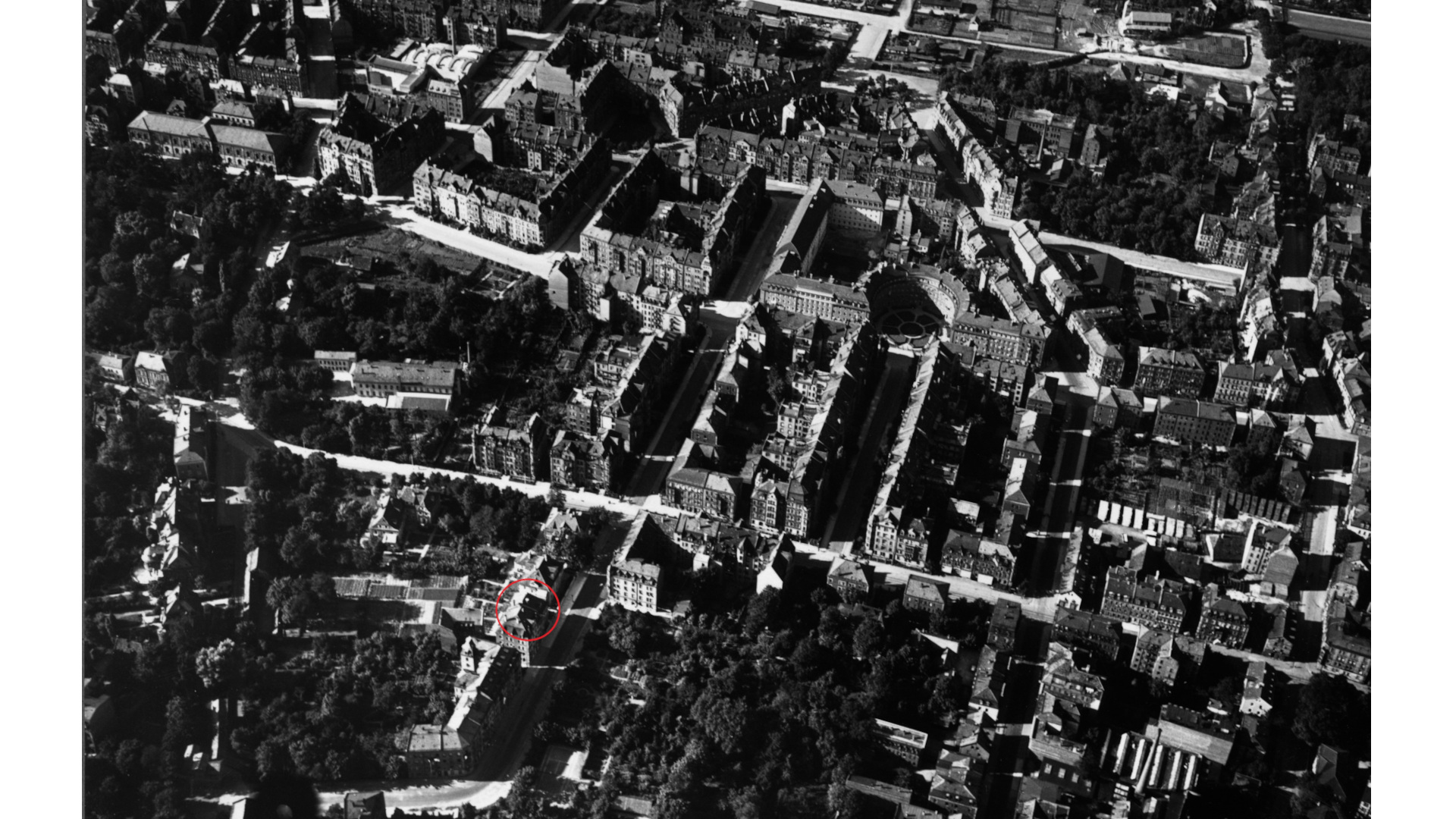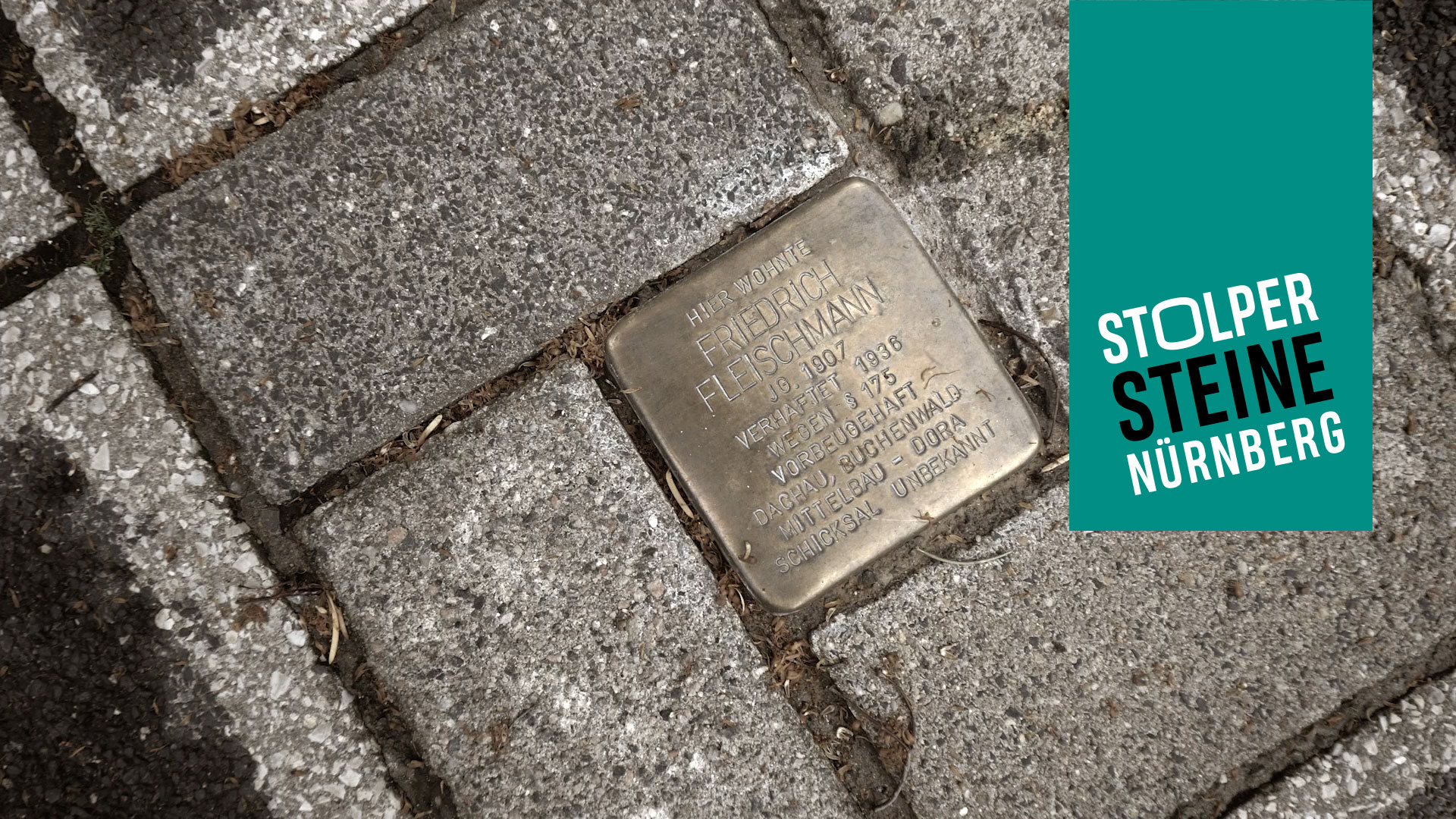| Location of stone: Krelingstrasse 21 | District: Gärten hinter der Veste |
| Sponsor: Thorsten Jörck | Laying of stone: 6 November 2019 |
Biography
On 6 November 2019 Gunter Demnig laid four stumbling stones for homosexual victims of National Socialism in Nuremberg. Thorsten Jörck sponsored the laying of the stone for Friedrich Fleischmann, a victim of the murderous system of concentration camps.
Friedrich Fleischmann was born on 8 April 1907 in Nuremberg. His father Fritz Fleischmann was a legal consultant. His mother, Elise (née Raupp) was Fleischmann’s second wife. Fleischmann was a Protestant. He had six siblings and two half siblings. After leaving school, he completed his business management training and began work as a sales representative.
In October 1935 Fleischmann was arrested in Frankfurt am Main for violating Paragraph 175. Shortly afterwards the district court there sentenced him to two months in prison. At the end of 1935 he was released but was arrested again a few months later, in May 1936. This time the Nuremberg Gestapo accused him of contravening Paragraph 175 and he was taken into “preventative custody” by the police. Fleischmann spent the next three years in the concentration camps of Dachau and Sachsenhausen. On 20 April 1939, he was released from Dachau, under an amnesty marking Hitler’s 50th birthday.
Back in Nuremberg Friedrich Fleischmann lived at various addresses. His last registered address, in September 1943, was Krelingstrasse 21. During the Second World War he was called up to serve in the armed forces. Fleischmann was again found guilty of contravening Paragraph 175 in October 1944 by the Central Military Court in Berlin. This time he was sentenced to five years’ imprisonment. At the instigation of the Berlin Gestapo he was once more transferred to a concentration camp. It is known that Fleischmann entered Buchenwald concentration camp as a prisoner in December 1944 and that he was transferred a short time later to the Mittelbau-Dora camp. The camp prisoners worked for the armaments industry and constructed underground tunnels. They endured terrible living and working conditions. There is no knowledge of what happened to Fleischmann after this time.
In the post-war period the local court in Nuremberg made enquiries to the International Tracing Service in Bad Arolsen concerning Fleischmann’s fate. As no information was forthcoming the court pronounced him dead at the end of July 1961.
- Nuremberg City Archives, C 21/IX registration card.
- Main City Archives in Hessen, 409/3: Frankfurt a.M. court jail, No. 8255.
-Documents on Friedrich Fleischmann in the data bank of the Arolsen Archives – International Center on Nazi Persecution, URL: https://arolsen-archives.org/.
- Information from Dachau concentration camp, 4 April 2017.
- Information from Rainer Hoffschildt about Friedrich Fleischmann, 15 June 2017.
- Biographical compilation by Dr. Matthias Gemählich.






